In case you hadn’t noticed, Cotic has been on absolute fire lately. The small Peak District-based company launched a new BFe hardcore hardtail just on a year ago, which then gave way to the 15th anniversary Soul, the latest FlareMAX, and more recently, a new Rocket as well.
Marching in behind those bikes is the SolarisMAX; the latest model to get the Longshot treatment.
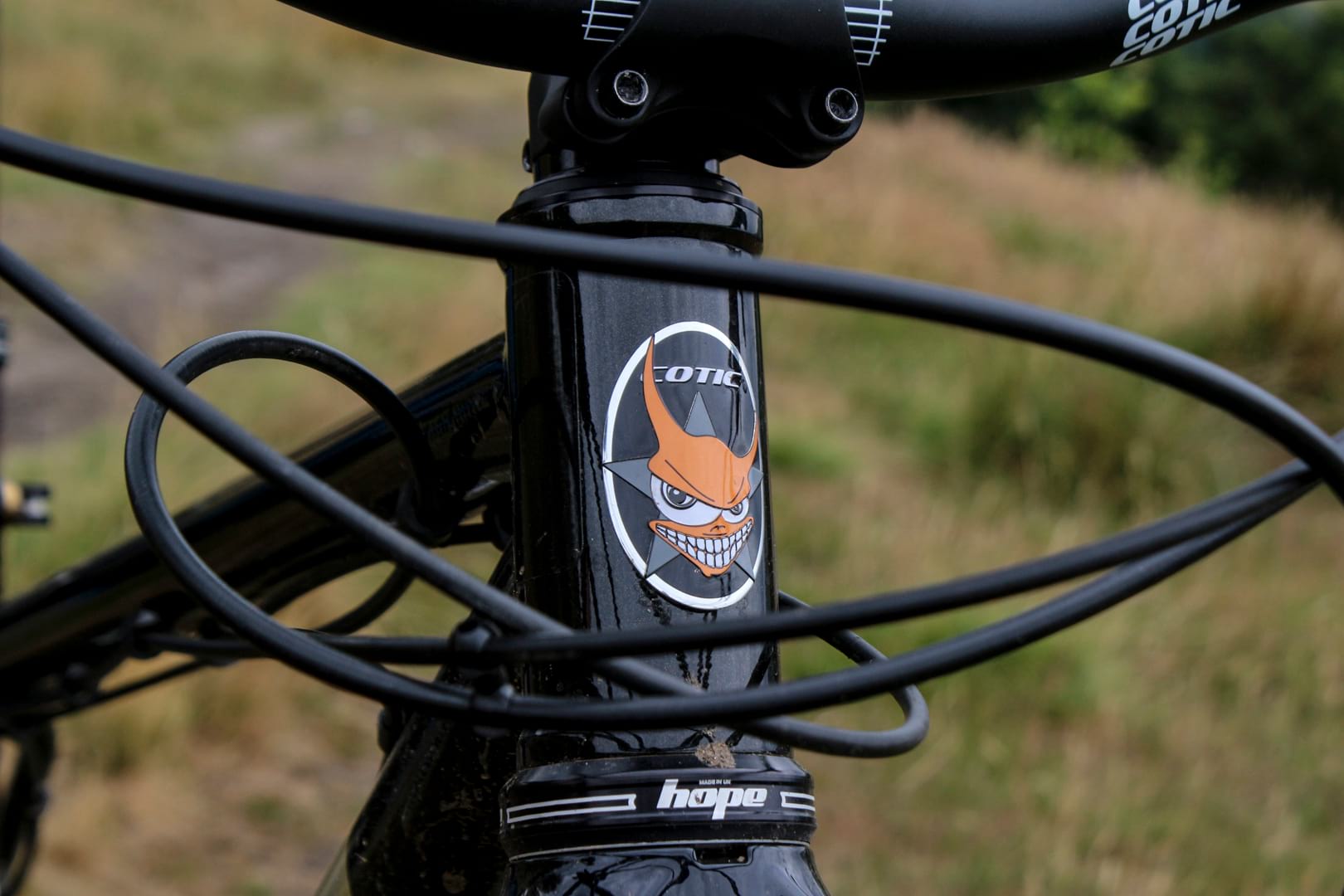
The Solaris is Cotic’s 29er hardtail, the first of which was launched back in 2012. I tested one of those original Solaris’ in Australia, and fell in love with its high-speed tenacity and all-round capabilities. I raced it at 6-hour enduros in Victoria, took it on long distance point-to-point epics in Queensland, and bombed it down steep trails in New Zealand. It was an absolute corker, and quite radical for its time. While most brands were still making awkwardly steep and short 29in XC race bikes, Cotic had built a robust steel frame with a slack head angle and the ability to fit anything from a rigid fork, all the way up to a 120mm travel suspension fork. Thanks to its versatility, the Solaris became a popular bike in the UK for all sorts of different riders.
Off the back of that success, Cotic rolled out a 2nd generation Solaris in 2016. This featured revised geometry, but it was the increased clearance to accommodate chubby tyres that saw the MAX label added to the name. Like the FlareMAX and RocketMAX models, the SolarisMAX could also take either 29in or 27.5+ wheels.
Latest Singletrack Merch
Buying and wearing our sustainable merch is another great way to support Singletrack

For 2018, the SolarisMAX enters its third generation and gets its most substantial updates yet. It’s still a do-it-all 29er hardtail made with burly steel tubing, but the new frame is now purpose-built around a 120mm travel fork.
More importantly, the new Solaris comes with revamped ‘Longshot’ geometry, which is basically Cotic’s fancy name for ‘longerer and slackerer’. There’s a bit more to it than that, but in a nutshell, it’s about pairing a drastically longer top tube with a tiny 35mm stem. This keeps the effective reach similar, while increasing the front centre length to improve the bike’s stability. Cotic’s founder and lead designer, Cy Turner, has put in a lot of development and test time to come up with the Longshot geometry package, and it is quite a radical update over his previous bike designs. If you want to learn more about the development process behind it, check out this video we shot with Cy from the London Bike Show.
You can get the SolarisMAX both as a standalone frame for £599, or as a complete bike with prices starting at £1,799 for the Silver build. There are four sizes from Small through to X-Large, and, as well as the Gloss Cosmic Black colour shown here, there are two further colour choices available.

The Bike
Like the SolarisMAX before it, the frame is TIG welded with a combination of slender 4130 chromoly tubes for the back end, and large diameter Reynolds 853 pipes for the front triangle. There’s a heavily sloping Ovalform top tube, along with a new, stronger downtube that’s been borrowed from the latest FlareMAX.
Both tubes are enormously long – there’s actually room for two water bottles inside the mainframe. This is Cotic’s Longshot geometry, and compared to the previous model, the front centre length has been stretched out significantly. The reach on the Medium sized frame I’m testing is 463mm – that’s longer than the XL on the old frame. The Large stretches to 486mm, and the new XL goes up to a whopping 513mm reach! Of note for riders shorter than 170cm, Cotic has also reintroduced a Small frame size for the Solaris, which still comes with a 440mm reach measurement, which is still longer than most brands’ Medium sized frames.
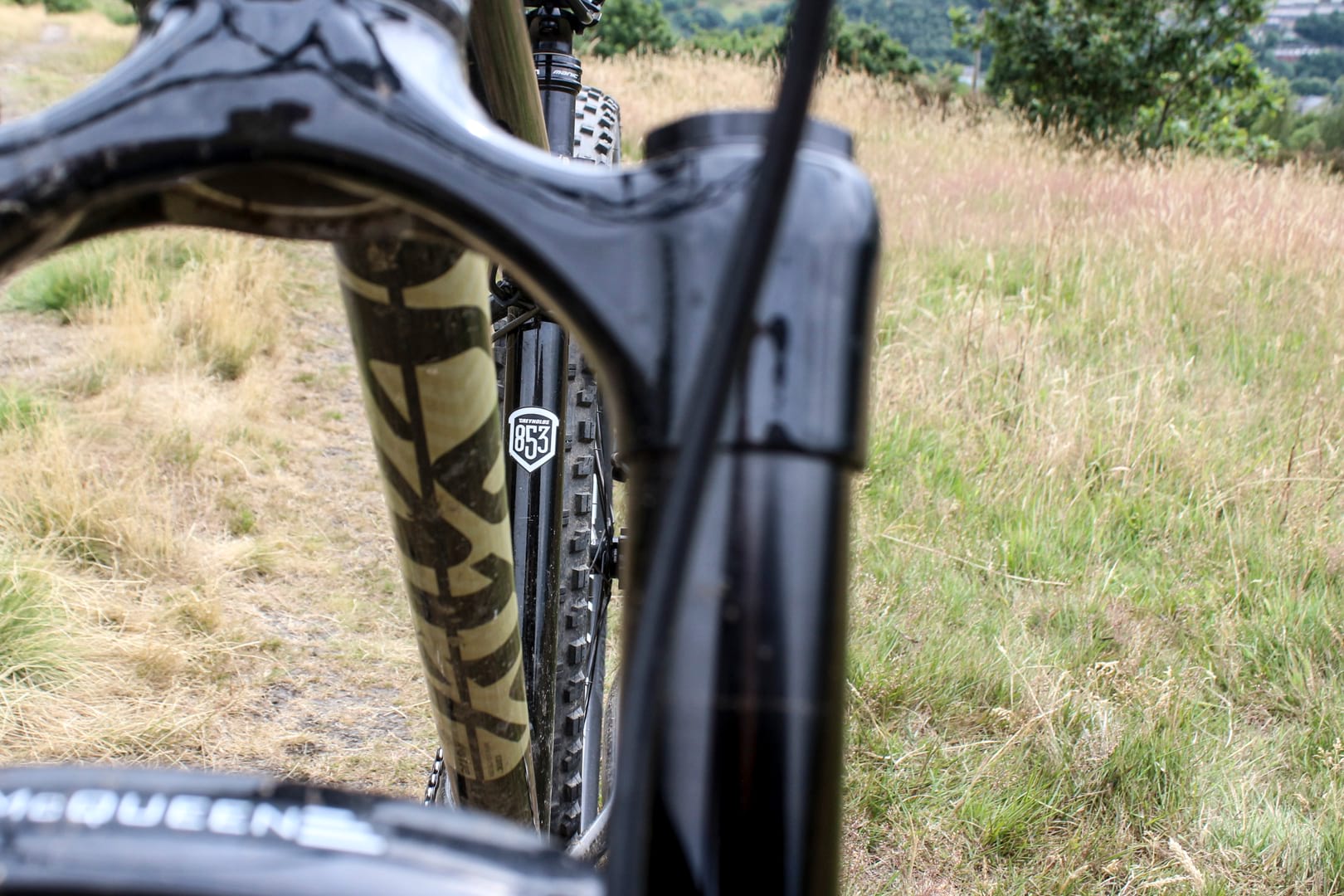

Reinforcing gussets are added in just behind the head tube, and in the middle of the frame is a fat, 34.9mm diameter seat tube that’s designed to add significant stiffness to the whole chassis – particularly though the BB area. The seat tube is cut nice and short, so even with my stubby legs I could easily fit a 170mm travel dropper.
Cotic thankfully avoids any new standards on the Solaris frame, which features a straight 44mm headtube, a 73mm threaded BB shell, and ISCG05 chainguide tabs. There’s external routing for the rear brake hose and derailleur cable, while the tidy, fully enclosed dropouts wrap around a 12mm Syntace X12 bolt-up axle. Cotic has updated the Solaris to Boost spacing, allowing for monster tyre clearance in the rear – you can slot in a 27.5×3.0in tyre, and I’ve had 29×2.6in tyres in there with room to spare.

The frame will accommodate up to a 140mm travel fork if you want to go properly wild, though our test bike came equipped with a 120mm travel X-Fusion McQueen HLR. Cotic measures the key frame angles with this fork at 25% sag to simulate a rider being on board. According to the specs, this puts the dynamic head angle at a very slack 66° and the seat angle at 74°.
Because I’ve been testing a few other components including SRAM’s latest NX Eagle 1×12 drivetrain and a set of Guide T brakes, as well as playing around with different wheel combos, the complete Solaris you see here is a bit of a mish-mash. The complete bike (which Chipps’ rode and featured in this First Look article) originally come to us with Cotic’s Gold 29 build kit, which sells for £2,499 for the complete bike. That includes a Shimano Deore XT 1×11 drivetrain with Race Face Turbine cranks, XT brakes, Cotic’s own-branded cockpit, and an X-Fusion Manic dropper post.


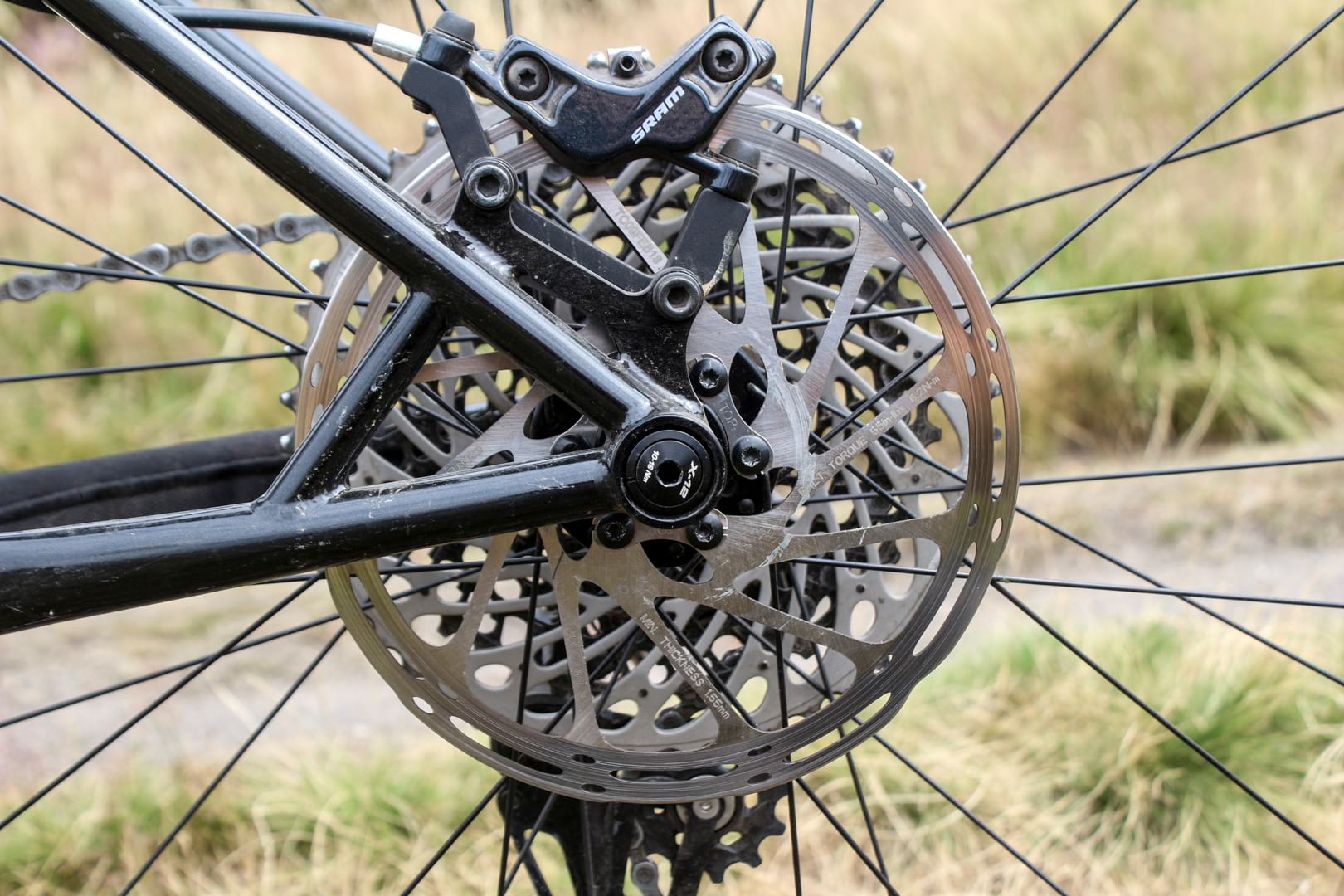
The stock wheels are from Hope, and are built around the excellent Pro4 hubs. While plenty stiff and strong, the old-school rims are way too skinny though at 19.5mm (internal), and that meant I had to run higher tyre pressures to prevent casing roll in the turns. The wheels aren’t that light either, coming in at 1887g on our scales.
All up, the stock build weighs in at 12.89kg without pedals. As shown here with the burlier wheelset and NX Eagle grouset, it weighs 13.44kg.
Setting Up
My immediate impression from first hopping aboard the Solaris was that it felt absolutely enormous. It felt like I was stretched out on an XL frame, and I had to double check I was in fact on a Medium. Despite my prior experience with the original MK1 Solaris, this is very clearly a different beast.
I made a few adjustments to the cockpit after the first ride. I didn’t get on with the stock Cotic saddle (too skinny and curvy), or the stock grips (too thin), so I fitted a PRO Griffon saddle and a pair of DMR Deathgrips. I also pushed the saddle forward on the rails to steepen the effective seat angle, and dropped the nose a touch.
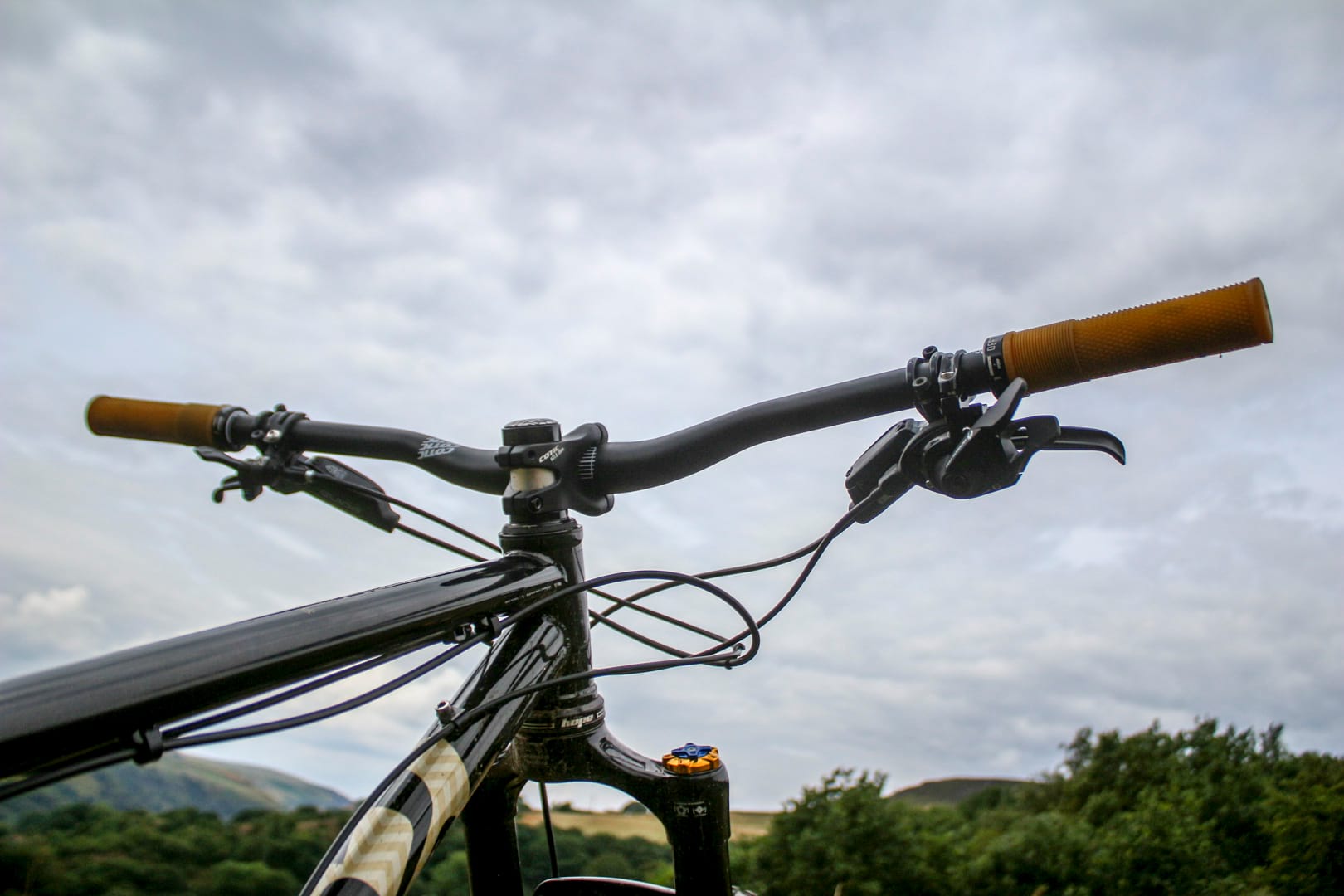

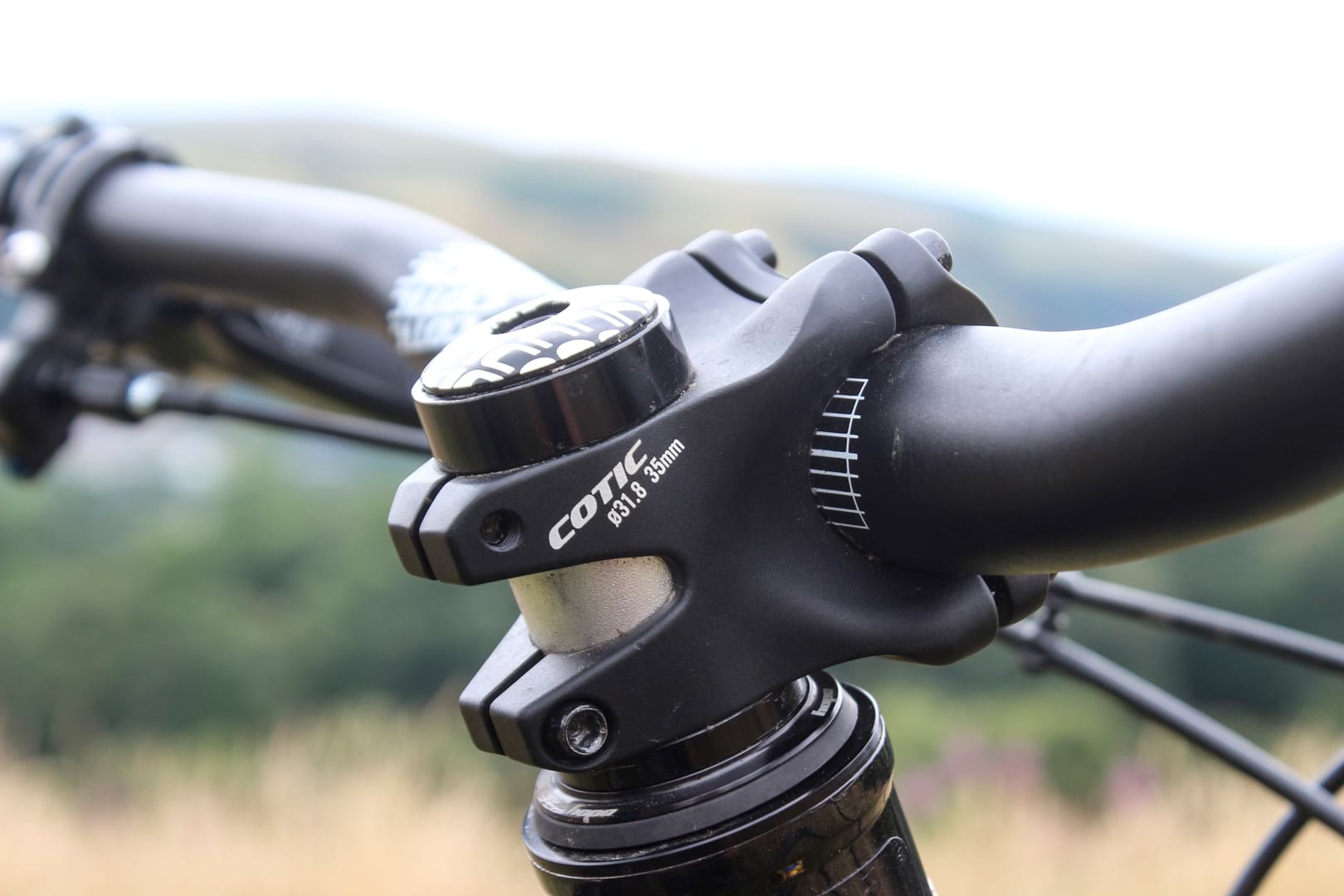
The 780mm wide Cotic handlebar is nicely proportioned, with the itty-bitty stem compensating for that huge top tube. According to Cy, part of the reason he decided to make his own bar and stem was because his other vendors (like Race Face) are all pushing the 35mm diameter standard. Cy isn’t a big fan of putting a stiffer bar on his bikes though, and he also reckons they look a bit weird next to the skinny steel tubes on the frame. So he designed his own around the 31.8mm diameter, which I prefer too.
Even with the adjustments, the Medium Solaris – with its 463mm reach – still felt massive. But you know what? After the second ride, I’d completely gotten used to it. My body position adjusted to the spacious cockpit, and soon I forgot about any of the on-paper measurements. My only point here is in relation to the seat angle. Though I was personally able to get a comfortable climbing position with the adjustment available in the saddle rails, I do think an extra degree to steepen the seat tube would help balance the long reach a little better.

The X-Fusion fork did take a little longer to get into though, as the sealing is tight from new. It took nearly a dozen rides before everything had bedded in, with the fork gradually getting smoother each ride.
As per the setup guide on the fork lowers, I went with 72psi for my 70kg riding weight, which got me at 25% sag as recommended by Cotic. The rebound adjustment range on the McQueen is weird though. There are 32 clicks on offer via the red dial, but only the first dozen or so are actually useful – beyond that, the damping is just comically slow. I ended up 8 clicks off full fast.
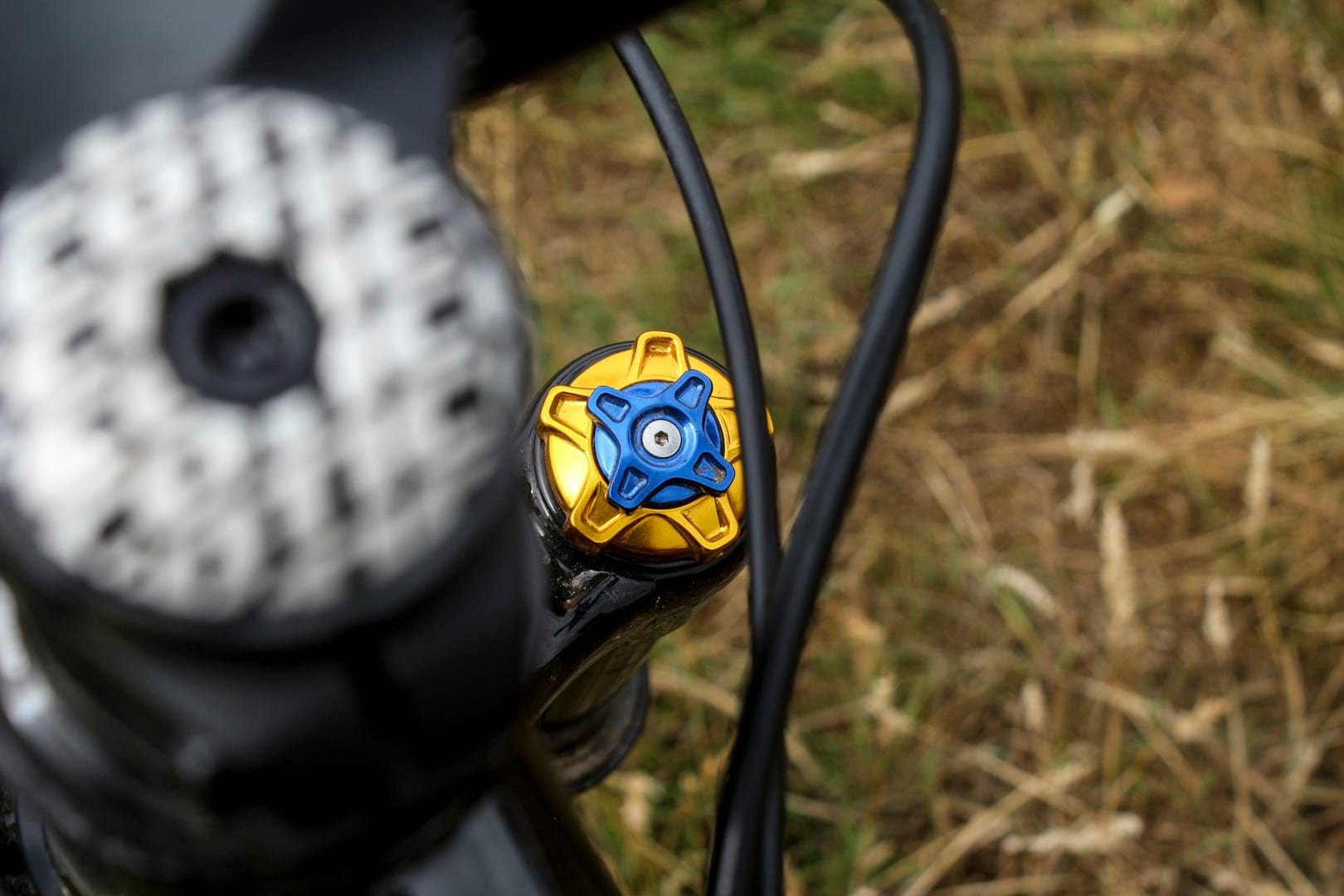

The sealed Roughcut HLR damper has both high and low-speed compression damping. Initially I set these wide open while I got the pressure and rebound dialled in, then gradually increased the compression damping over time. Of note here is that the McQueen’s air spring feels quite linear out of the box, so I needed to rely on more damping support to keep the fork from diving through its travel and bottoming out. I settled on having the LSC at 7/12 clicks, and the HSC at 7/14 clicks.
Towards the end of testing though, I then discovered that X-Fusion is now using plastic volume spacers inside the air spring, which is completely new to me. The stock fork has two volume spacers fitted, so there would be the option to add spacers to increase spring progression, while backing off the compression damping a touch. I didn’t have the chance to do this, since spare volume spacers aren’t yet available.
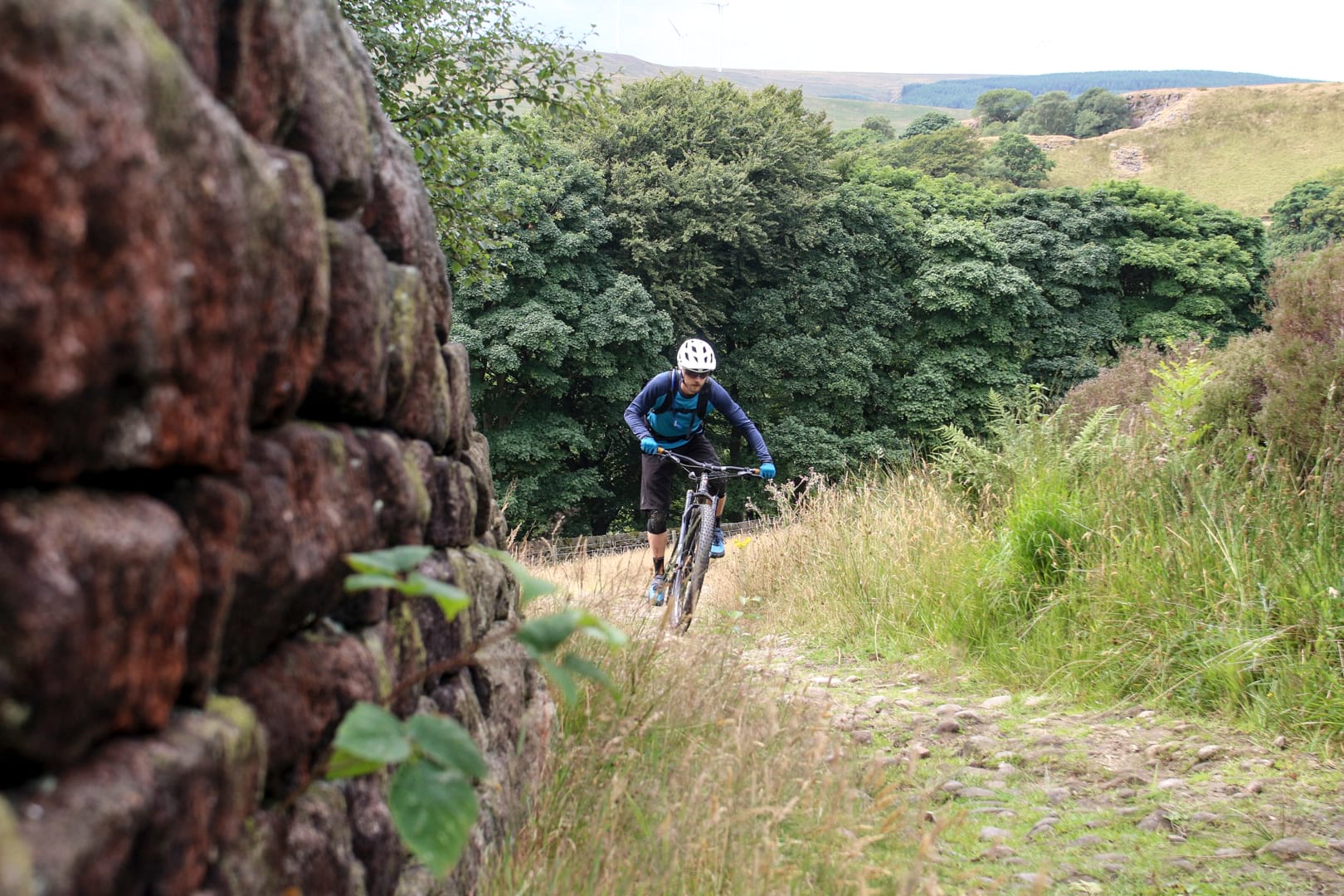
The Ride
So let’s cut to the chase. The new SolarisMAX is fast. Silly fast.
Yeah it’ll chug along happily enough on rolling terrain in a relatively unassuming way, but as soon as the gradient turns downwards, those big 29in wheels spin up to speed very quickly. A lot of that has to do with the slack geometry, but it’s also down to the enormous 1194mm wheelbase length, which to put into perspective, is almost as long as the 150mm travel Scott Genius I’ve been riding lately. As a result, the Solaris is very steady on the descents – it is remarkably planted for a bike that doesn’t have a rear shock.

Thanks to this descending stability and overall feeling of calmness, early on I managed to scare myself shitless on several of my local test loop descents. The Solaris has a thirst for riding at the sorts of speeds where everything either side of you becomes a blur, and all you can focus on is the tunnel of light ahead. Because it’s so steady though, sometimes you don’t realise how fast you’re actually riding. That is, until you come in waaay too hot into a hairpin corner with the rear tyre locked up, your pulse racing, palms sweating, heart in the mouth, and a cloud of dust hovering down the trail behind you. It’s at that point that you’ll probably be wanting some bigger rotors and callipers – the SRAM Guide T’s I’m currently testing on this bike don’t quite cut the mustard. Regardless, preemptive braking is a skill that I honed on the Solaris. This bike possesses a naughty ability for running away from you like a freight train on the descents, so make sure you keep those anchors in check if you end up plummeting down something that’s better suited for much longer travel full suspension bikes.
As I continued to get comfortable with the Solaris’ length, I found myself getting more in tune with its handling. Coming out of a high-speed straights into flat and wide-open corners, the large diameter wheels and big wheelbase can feel a touch sluggish, where the bike wants to cut a wider arc than what you need. This is partly down to the big wheel’s gyroscopic force, and some of it may also be down to flex through the steel frame, which isn’t as stiff or as responsive as an equivalent alloy or carbon frame. It’ll still get round those scrabbly high-load corners, but it requires more input through the grips and a little more concentration on your weight distribution.

Surprisingly though, it deals with tighter corners without issue – even with the relatively long 444mm rear end. There’s a good deal of bottom bracket drop below the hub axle line (60mm), which helps to push your centre of gravity down low through the tyre contact patch. And since your body position is more centred between the two wheels, it’s easy to change your weight distribution mid-corner as needed. Whenever I had to do that, I always felt like I had time – the un-skittish character of the Solaris seems to turn regular trail scenarios into slow-motion, allowing you to adapt your position to suit.
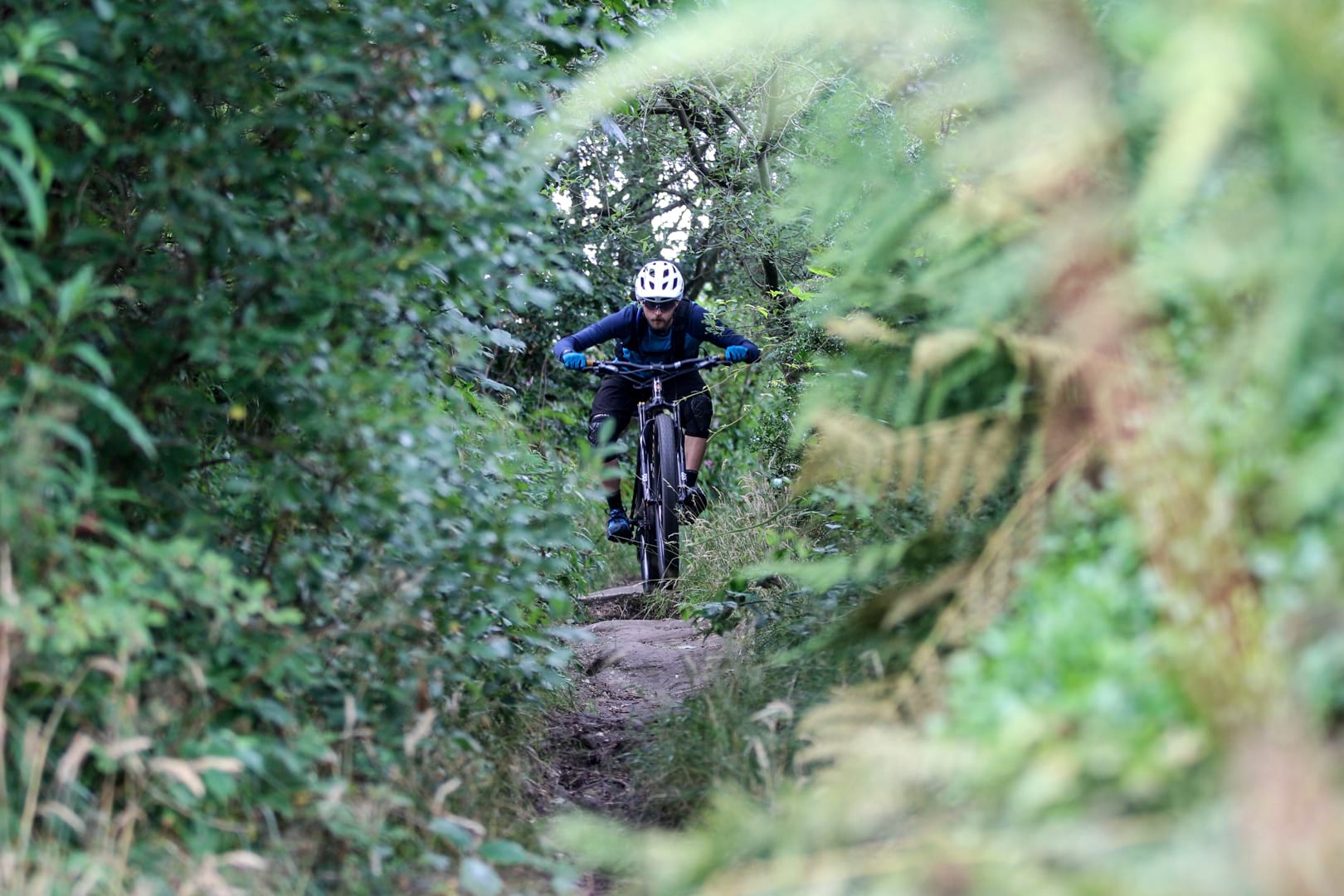
Generally speaking, I sometimes find these humoungo-reach bikes difficult to keep in check on faster downhill corners, because they require you to ride with a much heavier front wheel bias to get enough of your weight over the front tyre. If you’re nervous and ride off the back of the bike, the front wheel gets too light and can wash out. The Solaris doesn’t seem to have that issue though. I never felt like I had to exaggerate a forward-leaning ride position just to keep the front tyre sticking. This is partly due to the relatively short 120mm travel fork that keeps the front end lower in the first place, and the fact that it’s a hardtail – on the steeper stuff your weight is naturally being pushed through the suspension fork.
Like any steel hardtail with robust tyres and mid-range components, the Solaris doesn’t exactly fly up fireroads. It’ll get up them without a problem, and the roomy cockpit ensures that it’s a comfortable affair, but if you really want more climbing speed, then consider investing in some lighter wheels. That said, the Solaris is very good on technical climbs. Even with that slack front end, it doesn’t seem to wander as much as I was expecting on the steep stuff, which is surely down to the long back end that helps to prevent you from tipping over backwards. Even climbing on tight switchback corners, it’s quite easy to plop the short stem over to tip the front wheel around the turn.
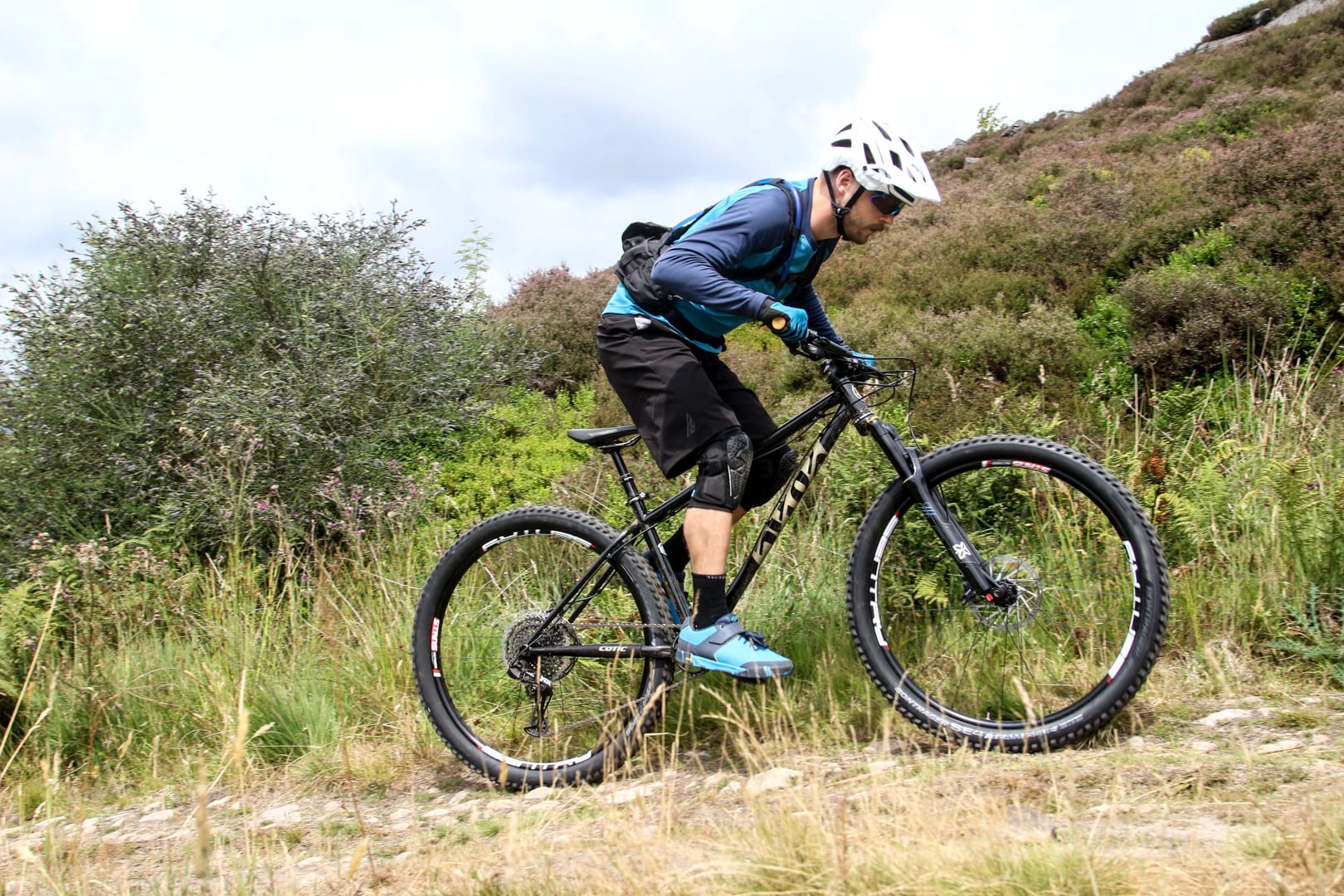
Bigger Tyres, Bigger Smiles
During the test period, I did have the chance to play with some other wheelsets on the Solaris. To try it out in plus mode, I fitted a set of 27.5in Syntace C33i wheels and 2.8in wide Maxxis tyres, which I’ve also been testing on the Scott Genius long term test bike.
With the added cushioning and resulting traction, the 27.5+ setup is an absolute hoot. The big tyres smooth out a lot of the chatter, proving to be unfazed by Calderdale’s choppiest packhorse singletrack. In fact, the rockier and lumpier the trails, the better the chubby tyres get.
Because there is no geometry adjustment built into the frame or fork, changing to 27.5+ wheels does drop down the overall ride height. I measured the sagged BB height at 298mm off the ground, which is exactly 10mm lower than the 29in setup. This drops the centre of gravity even further by putting you closer to the ground. You will need to watch the pedals though – I did clip them occasionally with the 27.5+ setup, but a lot of that is technique based, because the BB isn’t ridiculously low.

With the smaller diameter wheels, the Solaris does feel a touch more playful and easier to maneouvre. The big tyres help it to stick through the corners with ludicrous traction levels, while the front steering gets a bit more lively thanks to the decreased trail figure. That gives it some more zing for threading through wiggly singletrack, where the big tyres allow you to push the lean angle as far as you dare.
I still wouldn’t say it’s the most playful bike though – the Solaris is definitely more of a speed-loving ground-dweller than an air junkie. Sure, it’ll carry a nice and predictable path in the air when it needs to, but the big wheelbase makes it harder to lift up the front wheel in the first place, and I found it a difficult bike to wheelie – such is the trade-off for such immense stability and traction.
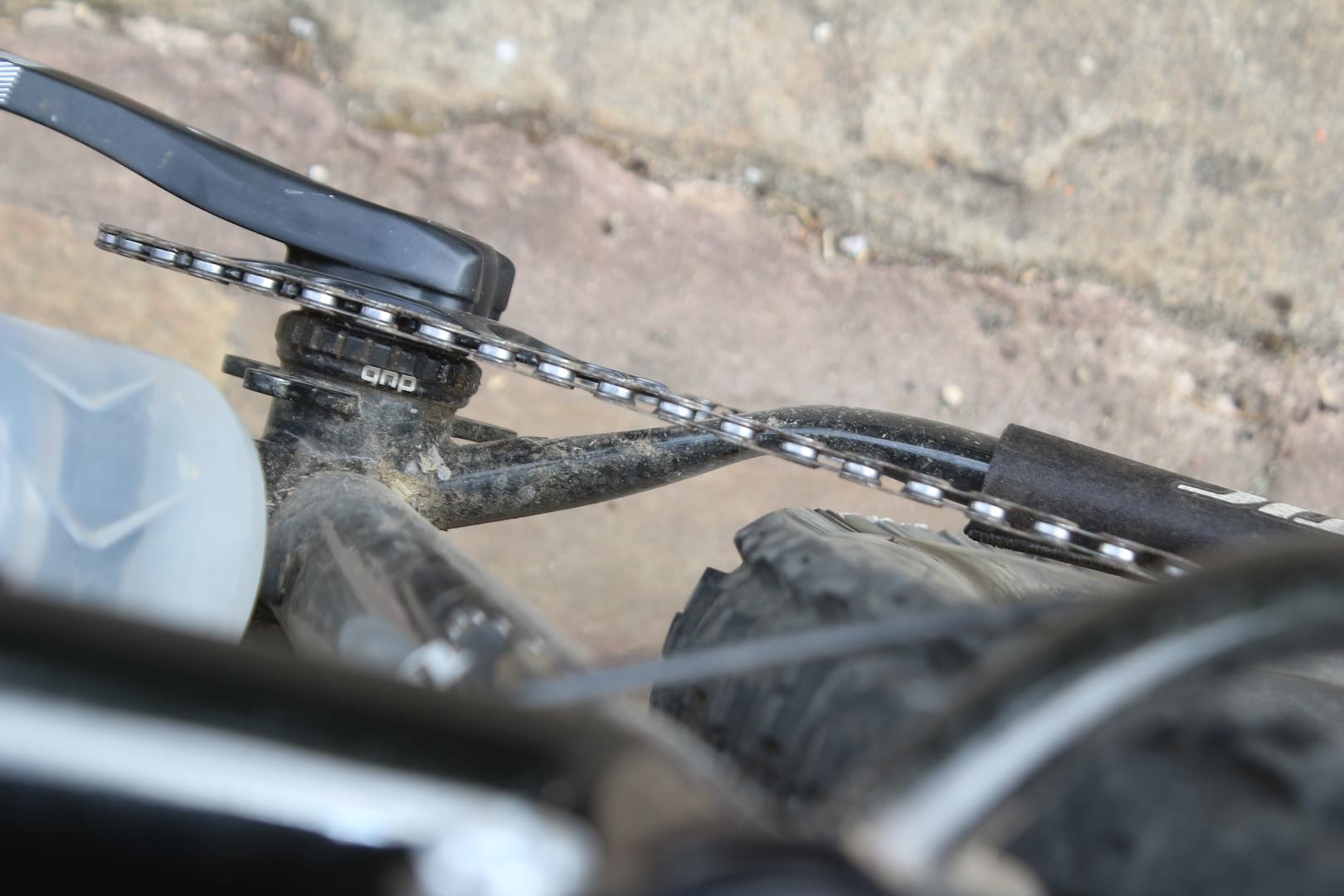
In my experience, I found the 27.5+ setup to be much more beneficial on the Solaris than it was on the long travel Genius though. The added damping and traction is well suited to a hardcore hardtail, and while the bike was noticeably slower with the aggressive Minion DHR II & High Roller II combo, it was fine for this type of bike. Of note for anyone who’s thinking of going the plus route; if you’re sticking with a 2.8in front tyre, most modern, regular 27.5in forks will now accommodate such a tyre. And because of the shorter A2C height, you could technically fit a 140mm 27.5in fork and the geometry would be near-identical to a 120mm 29in fork.
Getting back onto the 29er wheels, I decided to see how big I could go with tyre width. Cotic lists the Solaris as having clearance for 29×2.5in tyres, but in practice I had plenty of clearance around the 2.6in Bontrager SE4s. These were mounted to 32mm wide No Tubes Sentry MK3 rims, and set at 15psi on the front and 17psi on the rear, they measured up at 66.42mm (2.61in) wide.

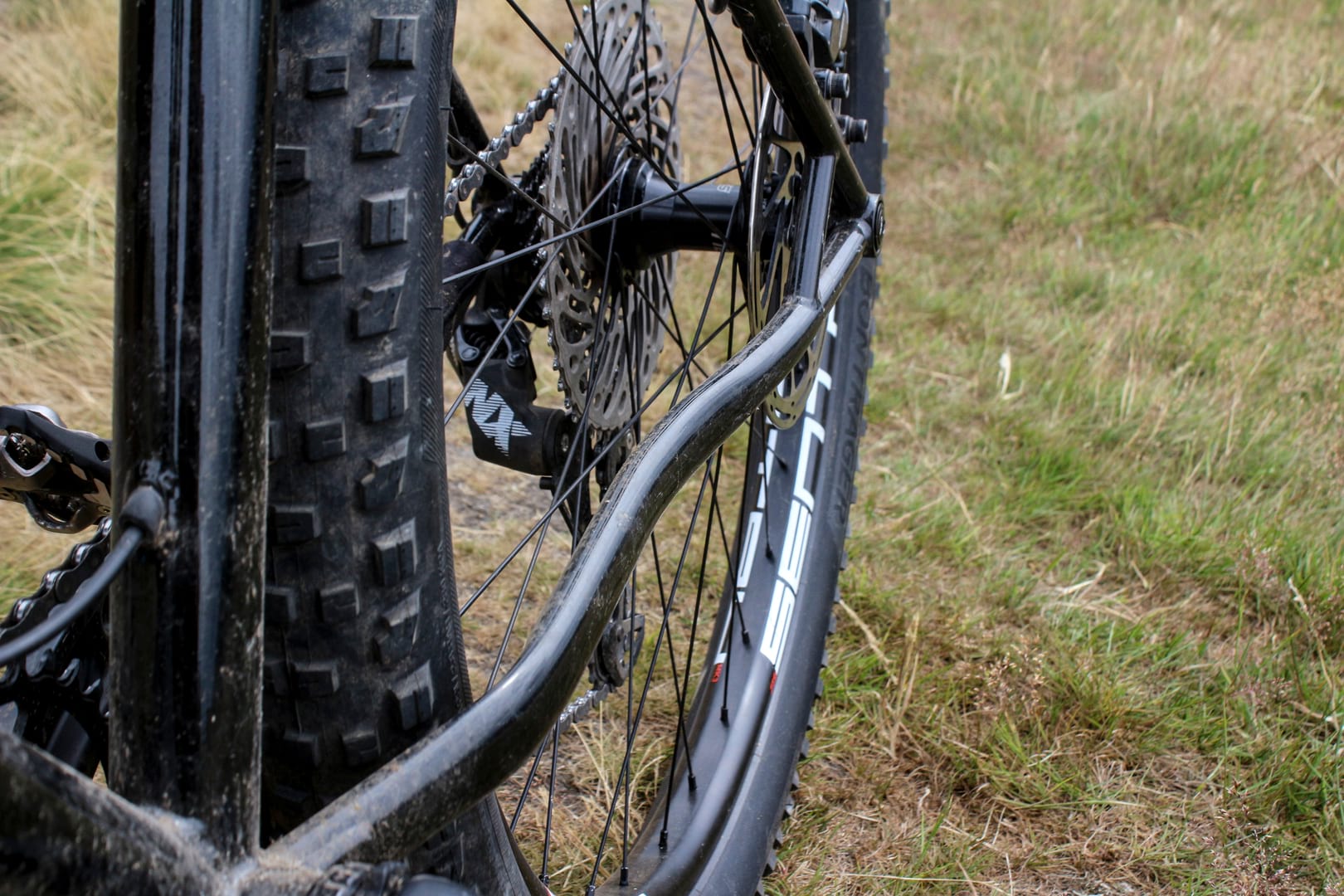
With the big 29er tyres on the Solaris, the speedometer kicks up another notch. You get some really nice float out of the big tyre casing, without that same squidgy feeling that 2.8-3.0in plus tyres tend to suffer from. Sure, the ride isn’t quite as supple, though the 29er wheels and 2.6in tyres do come very close in the compliance stakes. What you do get is better rollover capabilities, and that unlocks even more speed for hammering over chundery terrain. I flew down some of my favourite tech descents in Calderdale at a rate of knots that I’ve not achieved before on a hardtail, and it was as rewarding as it was exhilarating. If outright speed and stability is your style, the 29er setup on the Solaris is surely the way to go.
Component Notes
Due to the changing build kit on our test bike, I won’t go into too much detail about specific parts on here. What I will say is that I love that Cotic has chosen external cable routing, making it refreshingly easy to replace gear cables and swap brakes around. Only a small section of the dropper post cable runs inside the frame, and even then it’s all very straightforward for routing.

Speaking of the dropper, the X-Fusion Manic is a terrific performer. It’s super smooth in action, and it’s stayed solid and twist-free throughout testing. I really like the under-the-bar remote lever as well, with its adjustable textured paddle.
On the stock wheelset, I did experience a loosening of spoke tension from the rear wheel after the first 5-6 rides. I tightened up all of the spokes and trued the wheel, and it’s been fine since. Still, I think the stock rims are way too narrow for the Solaris, particularly if you want to experiment with the wider rubber that this bike is more than ready for.

Three Things That Could Be Improved
- I didn’t get along with the Cotic saddle or grips, but those are touch points and are easily changed
- A steeper seat angle – I had to slam the saddle forward on the rails to get the climbing position I needed
- Wider rims – the stock Hope Tech XC rims are too narrow
Three Things We Loved
- This bike’s hunger for speed – it is properly, properly fast
- The big tyre compatibility allows for a load of options for wheelsize experimenting
- The tough steel frame isn’t light, but it’s likely to last a very long time

Overall
I’d already been fond of previous Solaris models, but I’m even more impressed with what Cotic has been able to do with this latest generation. There’s definitely a lot of appeal that comes with the tough steel frame and wheelsize adaptability, but it’s the addition of the new Longshot geometry that has taken handling and descending performance to a new level. With its slack head angle, long wheelbase and big 29er wheels, this bike just wants to fly at any opportunity its given. It is properly rapid.
I had a blast riding it in both standard 29er trim, and with 27.5+ wheels, and the fact that you can run up to a 140mm travel fork means there’s a load of room for experimenting with various setups. However you choose to set it up though, as a competent mile muncher, a winter mud-plugger, or as a hardcore enduro hardtail, the SolarisMAX is likely to impress with its steady handling and speed-seeking momentum. This is a cracking bike that I’d have no trouble recommending to anyone in the market for a versatile, trail-friendly hardtail.

Cotic SolarisMAX Gold 29 Specifications
- Frame // Reynolds 853 Steel Front Triangle & 4130 Chromoly Stays
- Fork // X-Fusion McQueen HLR, 120mm Travel
- Hubs // Hope Pro4, 110x15mm Front & 148x12mm Rear
- Rims // Hope Tech XC, 32h, 19.5mm Internal Rim Width
- Tyres // WTB Vigilante 2.3in Front & Trail Boss 2.25in Rear
- Crankset // Race Face Turbine Cinch, 30t Narrow Wide Chainring
- Rear Mech // Shimano Deore XT, 11-Speed
- Shifter // Shimano Deore XT, 11-Speed
- Cassette // Shimano Deore XT, 11-46t, 11-Speed
- Brakes // Shimano Deore XT, 180mm Rotors Front & Rear
- Stem // Cotic Shorter Stem, 31.8mm Diameter, 35mm Length
- Bars // Cotic Calver, 25mm Rise, 780mm Wide
- Grips // Cotic Single Lock-On
- Seatpost // X-Fusion Manic, 31.6mm Diameter, 150mm Travel
- Saddle // Cotic Cromo Rail Saddle
- Size Tested // Medium
- Sizes Available // Small, Medium, Large, X-Large
- Weight // 12.89 kg / 28.36 lbs
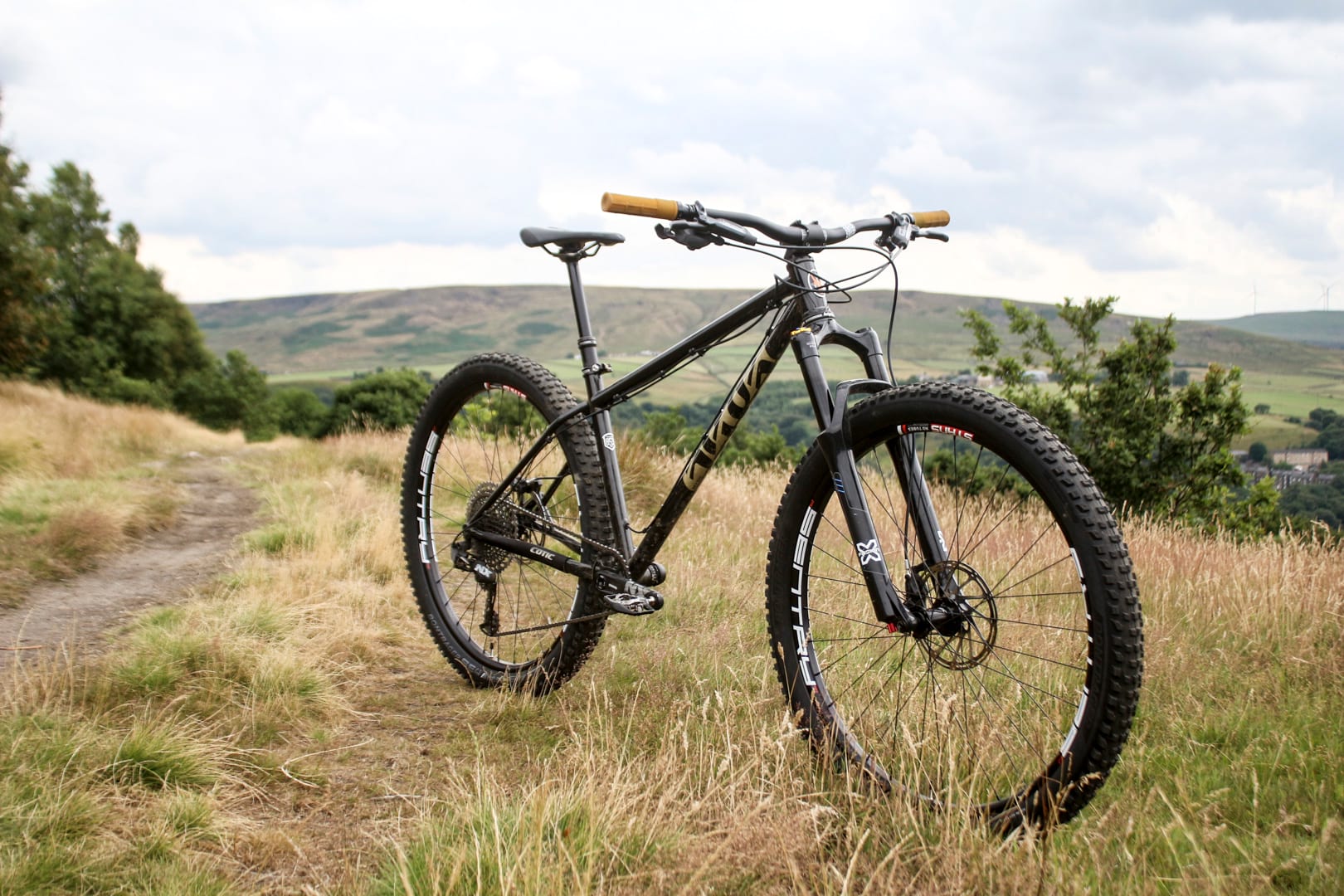




This really isn’t helping me not buy one.
Did you get the exact frame weight? Interested to see how much weight the extra length has added compared to the mk1. Mine has a 2° slackset and that makes it a pretty good non scary cross country bike so I’d like to see how one of these would ride built up light.
great write up Wil, Thank God I haven’t the space for one, I’d be all over this otherwise, £2.5K for a bike that well specced and capable is silly (cheap)!
@swanny853 – I didn’t, as we never stripped the whole thing down. Cotic claims the SolarisMAX frame weighs 2.2kg (4.9lb), which is pretty good for a steel frame, though I’m not sure for what size that’s quoted.
My guess is that with the longer geometry and the stronger down tube, it’ll definitely have a bit more weight to it than the MK1.
@nickc – Thanks mate, and glad you liked it!
ST Wil.
Great review Wil. Really enjoyed the MK1 tests way back when too! I thought the latest version was the 4th version though. I had seen it as:
Mk1
Mk 2 (slight geometry tweak plus OFI)
Mk 3 Max
No 4 Long shot Max
Sorry if I’m sounding pedantic, im just a Cotic fan.
I’m loving the set up and look of ‘your’ one. For me it stick with the 29er wheelset.
Cheers Will! Cotic are always good at keeping the weight down but I suppose you can’t work round the fact that a longer bike means more weight.
My XL frame weighed in at 2.6kg before building, including the axle.
Some odd sentences in this review:
“but the new frame is now purpose-built around a 120mm travel fork” – unless you want to use a 130mm, 140mm, or 500 a-c rigid fork.
“The compact 35mm long stem is specific to each of the four frame sizes” – it is used on all 4 frame sizes, and on other models too. Nothing specific about that.
But as ever I’ll take a review with a pinch of salt, and look forward to getting to know my new bike properly.
Great review thanks @singletrackwil . Just curious though, what size seat post do you use in a 34.9mm st? I’d guess that an 853 st would be 32.6 around internal which is a pretty odd size without shims.
@Normal Man – Thank you kindly sir, and glad you liked it! Technically, there have actually been five different Solaris frames (not including prototypes). I asked Cy @ Cotic about the different generation frames, and he considers the Mk1 & 2 to be basically the same Gen 1 model, then the first SolarisMAX as the Gen 2 model, then the new one here as the Gen 3 version.
@the00 – Thanks for passing on the frame weight information! Just to clarify your points there, Cy has built the new SolarisMAX around a 120mm travel fork – it will technically take a 130mm or 140mm travel fork, and the frame has passed the necessary testing standards to qualify for running a longer fork (and if you want to get really technical, it’ll actually take a 160mm travel 27.5in fork!), but the geometry has been optimised around 120mm travel. My apologies for causing any confusion for you there – I’ll go into the article to amend that so it’s a bit more clear. Likewise, each frame size is optimised specifically around a 35mm long stem, which is part of the Longshot Geometry package. Unlike other some other bikes out there that change the stem length depending on the frame size, Cotic has designed each frame to work with that nice and short 35mm stem.
Hope that helps explain, but just let me know if you’ve got any more questions mate!
@poe82 – Thanks mate – appreciate the feedback! The seatpost should be showing in the spec list down the bottom of the review – it’s a 31.6mm diameter for the post.
ST Wil.
Great review, Wil! Thank you.
I had removed the Solaris from my short list of frames to replace my SC Chameleon as a primary requirement for me is the ability to run 29×2.6 tires. If clearance with 2.6 is sufficient for UK riding, that will be plenty for here in the Southeast US where we don’t typically ride in the wet.
Any thoughts/comparisons of the SolarisMax to the Orange P7 29? Another frame on my shortlist along with the Sonder Signal Ti. I’m a little apprehensive of Ti being a clyde so leaning more towards a steel frame.
Thanks again!
Thanks STWil for clarifying that. I guess the 5th was the original first batch with the gusset at HT/DT junction, right?
In my mind it was ‘change in geometry’ = different model. So thanks for explaining.
I’m still enjoying my loyal mk1.
Just a couple of comments from a very very happy owner.
Wide rims – I went Hunt XC wide 29ers, and they make my reused tyres sit noticeably ‘fatter’. I went 29 as I could only stretch to one wheelset, and figure it was more adaptable though I’ve been really enjoying plus – with the wide rims, I’m debating if I need a Plus wheelset after all.
Droppers – I didn’t as I’ve never had one, don’t really need one round here and I had a decent carbon post.
A normal post sits a long long way out and really increases compliance (I have short fat hairy legs – 30″ inseam, Medium frame). If you’re buying it as an all rounder, it’s worth considering skipping the dropper and saving a little weight, but I will give it a go sometime. No bung for that hole supplied though, any ideas where I might find something?
Gloss black is amazing in the flesh/sun – more ‘beetle shell’ – but scratches easy 🙁 – the Fiamma rack arm not in use slipped and rubbed the top tube.
It rides light. Weight was a bit of a concern (was replacing a carbon everything hardtail) whilst agonising, but it’s really not an issue. Doesn’t feel heavy built up with GX Eagle – the Hunt wheels and no dropper maybe just let it dip under the reasonable barrier on the car park heft test, but in real life I don’t think you’d notice … light tubeless wheels pep it up like any bike really.
I went Fox Rhythm 34s (bought on that offer from germany and sat in the shed till now) – a solid but heavy ish option. I think you could build this frame ‘skinny’ and it’d still be a right hoot, but I’ve a few pounds to lose so the rock solid setup fits me better.
HTH